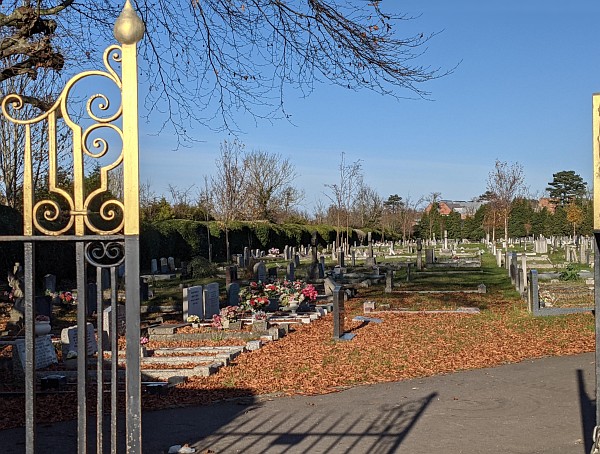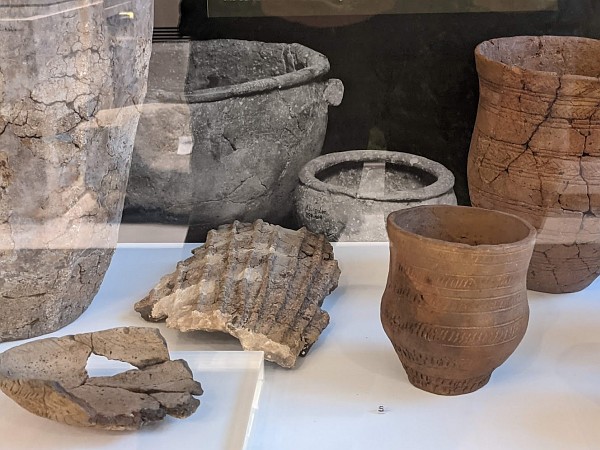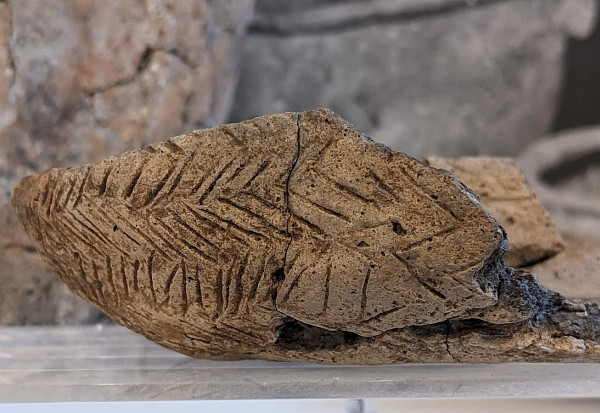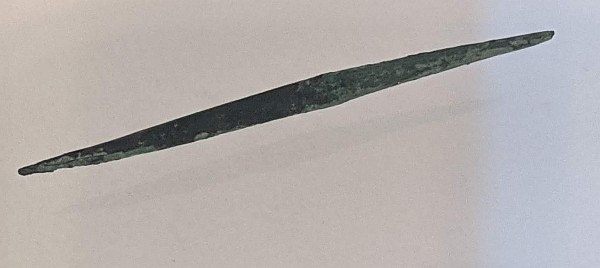
Agricultural land, beside Spring Road, was purchased by Abingdon Town Council and converted into a cemetery in 1940
Every now and again the grave diggers would find things of historic interest: old graves, tools, broken pots, and jewelry. One Cemetery Superintendent, Bill Skellington, has recorded the details of a lot of the finds (Neolithic, Iron Age, Roman, Saxon, and more recent.) The occupants of old graves were re-interred in new graves by him and his staff.
Around the year 2000 AD, a large trenched area was dug in the unused part of the cemetery to allow archaeologists to investigate some of the undisturbed land before it was used for cemetery burial. A book all about the dig, in 2000 AD, called ‘Saved from the Grave – Neolithic to Saxon – Spring Road Municipal Cemetery’ was written by T Allen and Z Kamash.

This picture shows some of the Neolithic pots in Abingdon Museum. The photograph of pots at the back are of ones found at Barrow Hills and were given the name of ‘Abingdon Ware’ because that type of pot was first found in Abingdon.

The pot at the front is half of an elliptical dish, called Peterborough Ware – because the first one, with this patterning, was found near Peterborough. This is the dish shown in the ‘Saved from the Grave’ book – found in Spring Road Cemetery.

There is also a copper awl on display in the museum found in a female grave. The label says it is one of the oldest copper tools ever found in Britain.
Most artifacts now go to the Oxfordshire Museum stores at Standlake. I expect the current grave diggers still find artifacts that need recording.